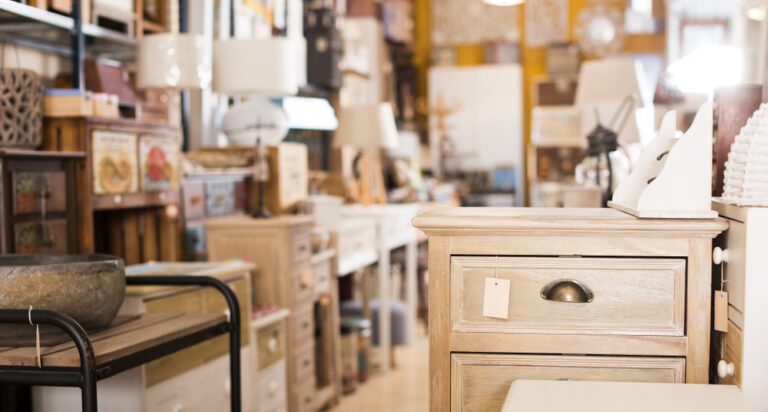In retail home furnishings, understanding and optimizing your conversion rate is akin to finding the secret sauce that can significantly elevate your furniture store’s performance. The conversion rate, a critical metric for any retail business, measures the percentage of visitors to your store (or website) who make a purchase. This simple yet profound metric offers deep insights into your store’s sales effectiveness and customer experience.
What is Conversion Rate?
At its core, the conversion rate in furniture stores is the ratio of the number of purchases to the number of visitors. It serves as a direct indicator of how well your store converts potential interest into actual sales. For example, if your furniture store receives 1,000 visitors monthly and makes 100 sales, your conversion rate would be 10%.
How Can You Measure It?
Measuring the conversion rate is straightforward but requires diligent tracking of two essential data points: the number of visitors and the number of sales. For physical stores, visitor counting can be achieved through manual tallying, electronic door counters, or more sophisticated visitor tracking systems. Sales data, on the other hand, is captured through your point-of-sale (POS) system. For online stores, analytics tools like Google Analytics can automatically track visits and transactions, offering a real-time view of your conversion rate.
Key Formula:
Conversion Rate = (Number of Sales/ Number of Visitors) ×100
*It’s important to note that when measuring in-store conversion rates, you must take proper measures to eliminate double counting. For example, if a family walks in together, they should only be counted as one customer. The proper system will ensure you’re counting your store’s visitors accurately.
How Can You Improve It?
Now that we understand conversion rate and how to measure it properly, let’s look at some ways to improve it!
Leveraging Data as Your Guiding Compass
In the quest to enhance conversion rates, data acts as a tool and a strategic compass, guiding every decision toward more effective outcomes. A crucial piece of this data-driven approach involves understanding the dynamics of your sales transactions, specifically through the lens of payment methods.
Analyzing the breakdown of your sales by payment type—be it through financing options or direct payments via cash or card—can unveil potent insights. For instance, discovering that a significant portion of your sales are financed, with an 80% conversion rate for customers opting for financing, compared to a 20% conversion rate for those paying with cash or card, signals a clear path for strategy optimization.
This knowledge empowers you to refine your sales focus. By identifying that financing options resonate more with your customer base and boast a higher success rate, the strategic move becomes evident: channel efforts into promoting financing applications. Encouraging more customers to consider financing options can significantly increase the likelihood of conversion, thereby maximizing sales efficiency and driving revenue growth in a targeted, data-informed manner.
Enhance the Shopping Experience
The ambiance of your store plays a pivotal role in conversion. Ensure your store is inviting, well-organized, and reflects the quality of your products. Online, this translates to a user-friendly website with high-quality images, detailed product descriptions, and an easy checkout process.
Train Your Staff
Knowledgeable and friendly staff can significantly boost your conversion rate. Train your team to engage with customers proactively, offer personalized recommendations, and handle objections effectively.
Optimize Your Product Range
Carry a product range that meets your target market’s diverse needs and budgets. Highlight new arrivals, best-sellers, and promotions prominently to attract potential buyers.
Leverage sales data to identify trends, best-selling products, and underperforming areas. This insight will allow you to make informed decisions about stock levels, pricing strategies, and marketing efforts, giving your buyers more insight into what products are right for your store.
Simplify the Purchase Process
In a physical store, ensure the checkout process is as smooth as possible, with multiple payment options and minimal wait times. Online, minimize the steps to purchase, offer various payment methods, and ensure website security.
Follow Up
After a visit, engage with potential customers through follow-up emails or messages. Please provide additional information, offer exclusive discounts, or simply thank them for visiting. This can encourage them to return and make a purchase.
Targeted Marketing to Attract the Right Customers
Bringing the right customers through your doors or to your website is half the battle. Here’s how targeted marketing can help:
Understand Your Audience
Dive deep into your customers’ demographics, interests, and buying behavior. This understanding will allow you to tailor your marketing messages and mediums to reach them more effectively.
Utilize Digital Marketing
Employ SEO, content marketing, and social media to reach potential customers where they spend their time online. Targeted ads on platforms like Facebook, Instagram, and Google can direct those interested in home decor and furniture directly to your store or website.
Email Marketing
Use email marketing to keep in touch with previous customers and interested visitors. Send updates about new products, exclusive sales, and useful content like home decorating tips to keep your brand at the forefront of your mind.
Collaborate with Influencers
Partner with home decor or furniture influencers to reach a broader audience. Their endorsement can lend credibility to your products and attract their followers to your brand.
Improving your conversion rate is a multifaceted endeavor that requires a blend of data-driven insights, a commitment to customer experience, and targeted marketing strategies. By focusing on these areas, furniture stores can attract the right customers and ensure they leave as satisfied buyers, thus driving sales and fostering long-term loyalty.














